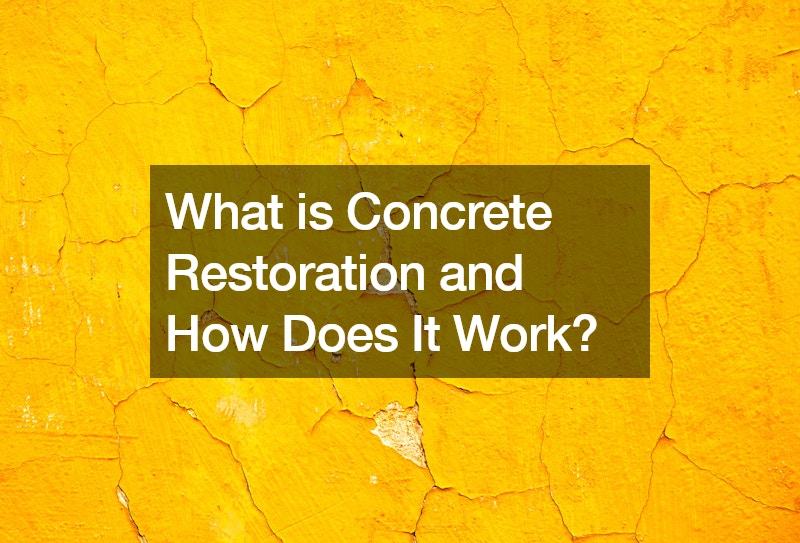Concrete is a versatile and durable building material widely used in construction for its strength and longevity. However, over time, even the most well-constructed concrete can deteriorate due to various factors like environmental exposure, structural stresses, and improper installation. Concrete restoration is a process designed to repair, rehabilitate, and enhance existing concrete structures to extend their life and improve their appearance. Here, we will explore what concrete restoration is and how it works.
Understanding Concrete Restoration
Concrete restoration involves the process of repairing and renewing concrete surfaces that have been damaged or degraded. Unlike simple repair, which might involve patching up a crack or filling a hole, concrete restoration focuses on returning the structure to its original condition or even improving its overall performance. This process can be applied to various concrete structures, including buildings, bridges, sidewalks, and driveways.
The Importance of Concrete Restoration
Concrete restoration is crucial for several reasons:
Safety: Damaged concrete can pose serious safety risks. Cracks, spalling, and structural weaknesses can lead to accidents and injuries.
Aesthetics: Restoring concrete can significantly improve the appearance of a structure, making it more visually appealing and increasing property value.
Longevity: Proper restoration can extend the lifespan of concrete structures, saving money in the long term by delaying the need for complete replacements.
Sustainability: Restoring existing concrete is more environmentally friendly than demolishing and rebuilding, as it conserves resources and reduces waste.
The Concrete Restoration Process
Concrete restoration involves several steps, each designed to address specific issues and ensure a durable and long-lasting result. Here’s how it typically works:
Inspection and Assessment
The first step in concrete restoration is a thorough inspection of the structure to assess the extent and type of damage. This can involve visual inspections, non-destructive testing, and sometimes core sampling to understand the internal condition of the concrete.
Surface Preparation
Proper surface preparation is critical for effective restoration. This involves cleaning the concrete surface to remove dirt, debris, and any loose material. Methods such as pressure washing, sandblasting, or chemical cleaners are often used to achieve a clean and stable surface.
Repairing Damage
Depending on the type of damage, various repair techniques are employed. For cracks, epoxy injections or polyurethane foam can be used to fill and seal them. Spalling or surface deterioration might require the removal of damaged concrete and the application of repair mortars or overlays.
Structural Strengthening
In cases where the structural integrity of the concrete is compromised, additional measures might be necessary. This can include the installation of steel reinforcements, carbon fiber wraps, or other strengthening materials to restore and enhance the structural capacity.
Surface Treatment and Protection
To prevent future damage and improve durability, surface treatments are applied. These can include sealers, waterproofing agents, and protective coatings that shield the concrete from environmental factors such as moisture, chemicals, and UV exposure.
Finishing Touches
The final step in concrete restoration is the application of finishing treatments to improve the aesthetic appeal. This can involve polishing, staining, or painting the concrete surface to achieve the desired look and texture.
Conclusion
Concrete restoration is a comprehensive process aimed at repairing, strengthening, and enhancing concrete structures. By addressing damage and applying protective treatments, concrete restoration ensures the safety, longevity, and visual appeal of concrete surfaces. Whether for residential, commercial, or industrial applications, investing in concrete restoration can save significant costs over time and contribute to more sustainable construction practices. Understanding the importance and process of concrete restoration helps property owners and managers maintain their investments and ensure the structural integrity of their concrete assets.
.




